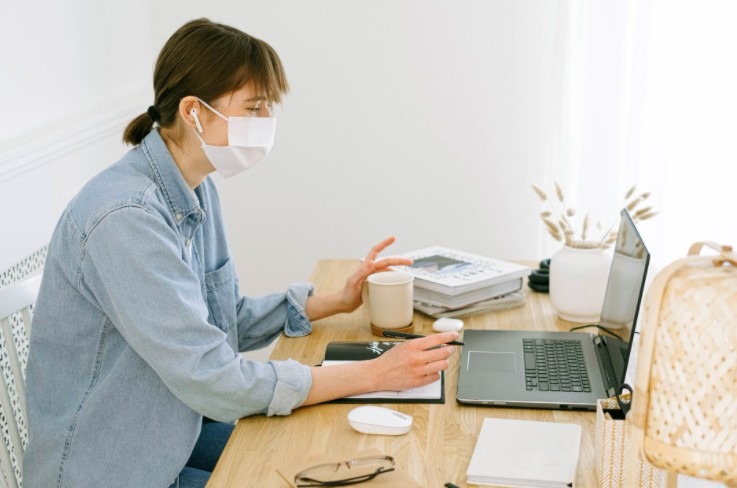While several large companies like Google, Ford, and Microsoft remark that “June is the new January” when it comes to employee’s return to in-office work, some employers are determined to maintain their initial in-person plans in early 2021. As COVID-19 vaccines become more accessible and the pandemic’s economic toll rages on, more businesses are preparing to ditch their work-from-home setups. In fact, 60% of American employees expect that they’ll be back in the office by the end of Quarter 1 in 2021.
Still, some folks aren’t feeling quite ready to trade their living room laptop spread for an in-office desk. As COVID cases surge across the nation, so do concerns surrounding the safety of commuting via public transportation and gathering in large numbers at the workplace. Now, employee-sponsored safety precautions are more important than ever. If you’re considering transitioning your company back to a shared workspace, consult these five steps you can take to protect your high-risk employees.
Invest in commercial cleaning services
The times of casually performing a once-per-year office deep clean are long behind us. Finding yourself without proper disinfecting supplies has proven detrimental as offices work to curb the spread. A bottle of Lysol and a package of rags aren’t enough to knock down COVID-19 cells since SARS-CoV-2 is highly transmittable.
However, thorough commercial cleaning companies can assess high-touch areas and strategically protect your employees with specialized tools and products, decreasing spread risk. Hiring professional disinfection treatment service providers like these will keep your workspace squeaky clean and help you flatten the curve.
Implement strict regulations requiring sick employees to stay home
Considering the highly contagious nature of the COVID-19 virus, there’s little room for flexibility in making sure sick employees avoid contact with others in the office. Give employees access to CDC-regulated symptoms, urging individuals to watch out for COVID-19 signals, and prohibit employees from entering the workplace if they experience them at any time.
Embrace the digital life when possible
While nothing satisfies an employee’s need for social interaction and clear communication like a face-to-face roundtable meeting, most prefer Zoom burnout to an office COVID outbreak. Re-evaluate which office practices legitimately require in-person dealings, and implement remote work—via phone, video call, or email —when possible. Remain mindful of local health department recommendations so you can make informed decisions regarding meetings, gatherings, or conferences.
Provide emergency benefits for workers
If you plan to ask sick individuals to stay home, incentivizing safe practices is a must. Offering emergency paid sick time during a global pandemic is highly reasonable and the best way to ensure ill employees don’t disregard quarantine guidelines for fear of missing a paycheck.
Be flexible when it comes to family medical leave, as employees may need extra time off to cater to sick family members and provide childcare for children who are attending school from home. Not only will you avoid instances of contamination and exposure, but you’ll also retain quality employees who will feel safe and considered.
Enforce precautionary measures on all customers and employees
From mask-ne (mask-induced facial acne) to dry and crackly ultra-sanitized hands, it’s no secret some COVID precautions feel downright uncomfortable. What’s more, you’ll likely encounter resistance from frustrated employees and customers. While opting to require face coverings, hand washing, social distancing, and consistent disinfecting practices may be inconvenient or uncomfortable, it’s critical in curbing the blow and protecting well-loved employees and customers.
Plus, fielding complaints from fussy conspiracists will leave you in much less trouble than a write-up from the health department or the loss/harm of one of your valued employees. By taking charge and action to protect your at-risk employees, you can have the best of both worlds and keep your business and your workers happy and healthy.
The bottom line
Although remote work is likely here to stay post-pandemic, in-person reunions are slowly seeping back into the workforce. Take extra precautions to protect your employees and consumers by implementing strict social distancing, sanitation, and mask-wearing procedures, allowing your business to boom despite COVID-19.

